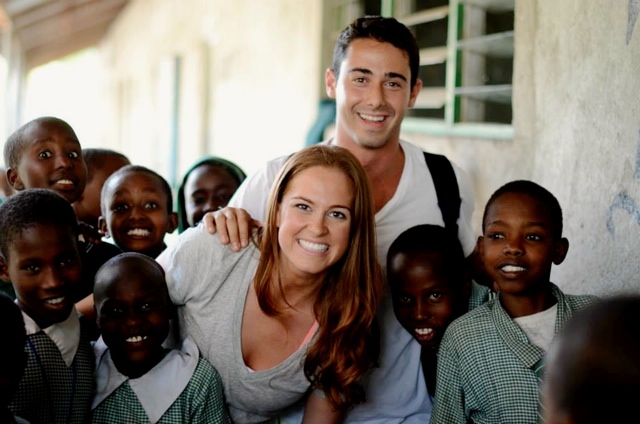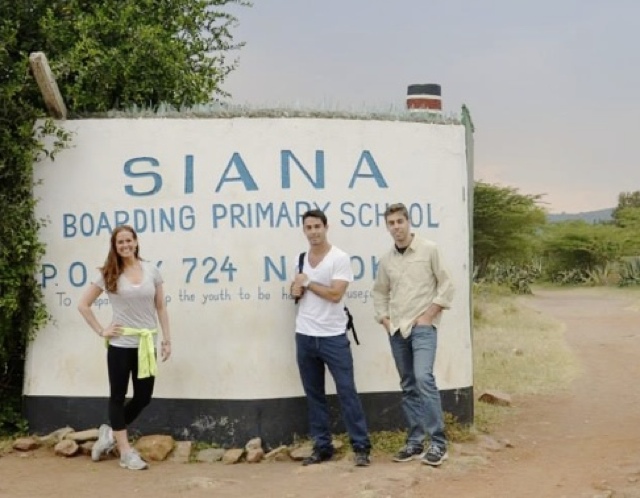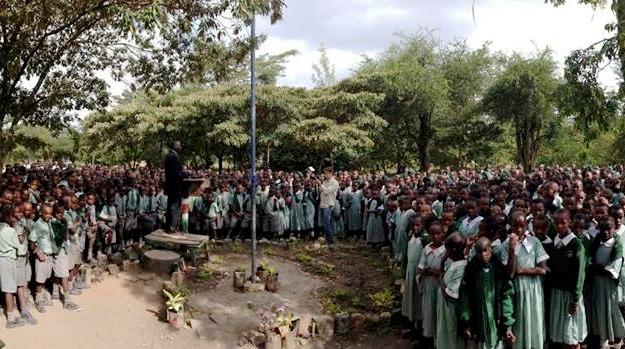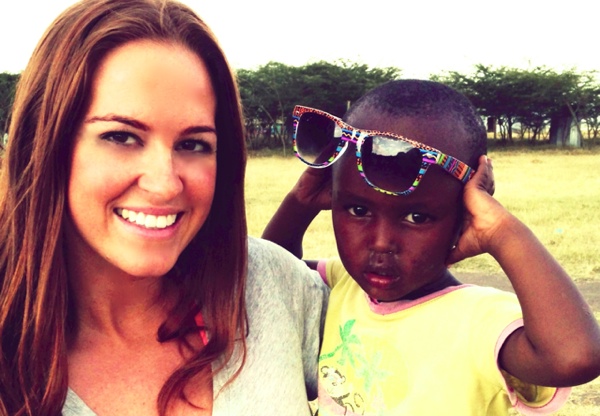Welcome to our first ever Movers & Shakers interview. In this interview series, we’ll talk to people who are doing tremendous things in industries such as nonprofits, social entrepreneurship, digital marketing, and startups. We hope to share insights and tips that have made these individuals and organizations successful!
For our first interviewee, we have Julia Fehrenbach. She’s the co-founder of Building Blocks for Change and recently named one of New York City’s Top 20 Young Philanthropists.
Tell me a little bit about yourself and your previous career history.
I have worked in marketing and PR since I moved to NYC, but went to school in LA which gave me the chance to intern in the nonprofit space with Jessica Biel’s organization. Since then, I’ve been a part of several leadership boards here in the city as well on the philanthropy chairs of the corporate PR firms I’ve worked for.
How did you end up in the nonprofit/NGO space?
I was always very involved with the nonprofit space, being on host committees and helping with fundraising events. My first big foray into the nonprofit world came when I worked with the founder of Pencils of Promise, Adam Braun, on their marketing campaigns.
What is Building Blocks for Change and what inspired you to create it?
Building Blocks for a Change focuses on sustainable infrastructure projects in Africa, specifically Kenya right now. We partner with local organizations and smaller NPOs and social ventures in the US to build infrastructure for villages from the ground up. We’re structured as a connector umbrella organization that puts pieces together with a grassroots, bottom-up approach to building sustainable practices.
I wanted to be a part of BBFC because it gave me the chance to prove my entrepreneurial grit while helping improve lives in the developing world. I’ve had the opportunity to travel to several emerging countries and have always been fascinated with Africa. My co-founder lives part-time in Kenya and wanted to do more the logistical and back-end leg work of the organization and wanted me to be the face and voice, which was an ideal match based on my previous experience.
Where along your journey of starting BBFC, did you think “Hey, we’ll definitely succeed, BBFC will make a huge difference!”?
My co-founder was already doing sustainable projects in Africa, so I knew the concept was strong from the get-go. What really sold it was when I started telling people what I was up to, and seeing so many positive reactions and offers of support. When we had our launch event, we raised a substantial amount of money, so we started out confident.
Speaking of launch event, what exactly did you do?
The advantage of launching a nonprofit in NYC is the level of unique and exciting events you can experience! We had a large-scale black-tie event at Classic Car Club, got the press involved, invited some influencers, and had every attendee check-in and tweet using a BBFC hashtag. The event was very well received and word got out quickly about our organization. In short, we wanted to go bigger and bolder knowing it can be difficult to break into the New York social scene when there are so many fantastic events and wonderful charity fundraisers to attend.
What are some skills and traits that you think are absolutely necessary when starting an organization similar to yours?
No matter what, you need passion and clear vision. One thing people often overlook is the idea that a nonprofit should be managed as a business. Instead of a for-profit it’s what social entrepreneurs call a “for-purpose”. You still need to have clear cut goals and be efficient to get the best end results possible. Also having a “no job too big or too small” attitude never hurts.
Aside from the common nonprofit challenges such as funding, lack of volunteer help, etc., what’s a really difficult obstacle that your organization has faced or is facing?
Our biggest obstacle is creating a long-term vision that follows our theory of change. We obviously know how much of an impact we want to make, but given the large amount of much-needed infrastructure projects, choosing one or a couple and figuring out their long-term value has been the our most difficult task. We want to do everything but financially and logistically that’s impossible, so choosing one set strategy is very challenging.
What have you done to mitigate or solve this problem?
We just brought in a new team member, who who studied civil engineering and economics, to help us understand the life-cycles of individual infrastructure projects to see which direction we should go for BBFC. We also partner with similar outfits to get their feedback and evaluations of our sustainability strategies. Basically we surround ourselves with talent, which any company that wants to be successful should do. We also believe having transparent goals and metrics allows you to get larger donors in the long run.
Building a brand has been a key part in the success of charities such as charity:water or Movember, how important is branding for BBFC and why?
For BBFC, we brand ourselves to be a fun and exciting nonprofit for a younger crowd. Our donors and volunteers are younger people who don’t usually have a lot of money to give, but we want this younger crowd to grow with us in the hopes that later on, when they establish themselves professionally, they’re more likely to donate larger amounts of money, time, and other resources.
We also pride ourselves in having events that are a little different and a lot of fun. Our launch event was in a car garage and showcase, we recently had a gala at an old synagogue with elaborate decor. We try to be unique, and my previous event planning experience has really helped with this.
We also use the bottom-up theory from charity:water, where every little amount counts. So it’s easier to get people to donate once they know even a small amount makes a big change, so we try to incorporate that into our branding.
In a digital world, where delivering a message to a huge number of people is as easy as a Tweet or Facebook post, it’s easy for a lot of organizations’ voices to get lost in the noise. How impactful has technology been in delivering your message, building relationships, and raising money?
The ability to use influencers whether it’s in an online blog or press has been tremendous in terms of getting our name out there. Having an easily identifiable hashtag and direct links in everything our partners push out has led to a ton of donations from sources we couldn’t reach without social media. We also use photographers for all of our events who have the best search ranks in Google images, which ensures our pictures always show up when anything related is searched.
What are some of your favorite tech tools that your organization can’t live without?
We use Eventbrite all the time, and its ease of use gives us one less thing to worry about. CharityHappenings is a website where you can actually post your auction items and get donations that way, and also post your events to a much larger newsletter audience. And finally, I think social media marketing including Facebook and Twitter, has been a huge reason for some of our early successes such as our launch event.
There’s been a huge increase in entrepreneurship over the years, would you describe starting and managing BBFC similar to starting and managing a for-profit company? What are the differences?
There only real difference is the idea of for-purpose versus for-profit. The other main difference is the idea of career growth both financially and professionally. There aren’t huge bonuses and promotions in the nonprofit world. For us, we want to pay our team members with real salaries and benefits, because studies have shown, treating your nonprofit and team, in almost overly frugal way, is detrimental in bringing in great talent, and the overall success of your organization. You should treat everything with the same cost-benefit analysis you use in managing a company.
As a young philanthropist, what changes do you see in how nonprofits work and accomplish goals from any of the nonprofits you’re familiar with from 10+ years ago?
The concept of social entrepreneurship is still relatively new. The old idea is that a nonprofit fundraises, gets donations, maybe throws a thank you event and that was it. With nonprofits now, social media allows everyone to get involved easily. And also there’s a huge emphasis in corporate philanthropy now. Every major company has its own philanthropic arm, which allows for more partnerships between the corporate world and the nonprofit world. This trend also gives people the feeling that it’s their duty to not only do great in the office but give back outside of it.
What is the best advice you would give to people interested in starting their own nonprofit?
You always have to trust your instincts if you’re passionate about something! Build something as if you were running a business and create a clear plan for today but also for 10 years from now. It’s unrealistic to think you can save the world in one day, so look at it as an ever-evolving process. Be aware of the risks but never be afraid to just go for it!
How can people get more involved with BBFC?
Well first, you can go to our website at buildingblocksforchange.org. You can get involved by volunteering in planning and managing events or fundraising. We’re going to start trips to Africa soon, where people can get the chance to work directly on our sustainable infrastructure projects. And we’re also looking for people who can create connections between corporations so we have more partners moving forward.











